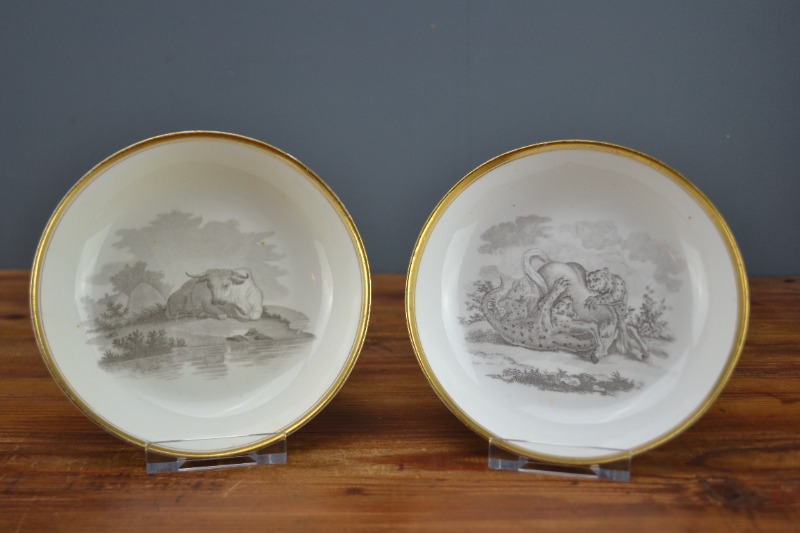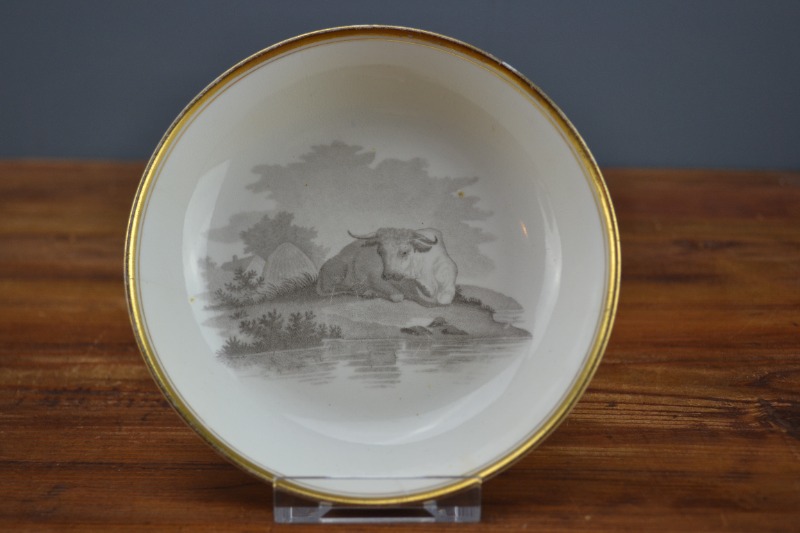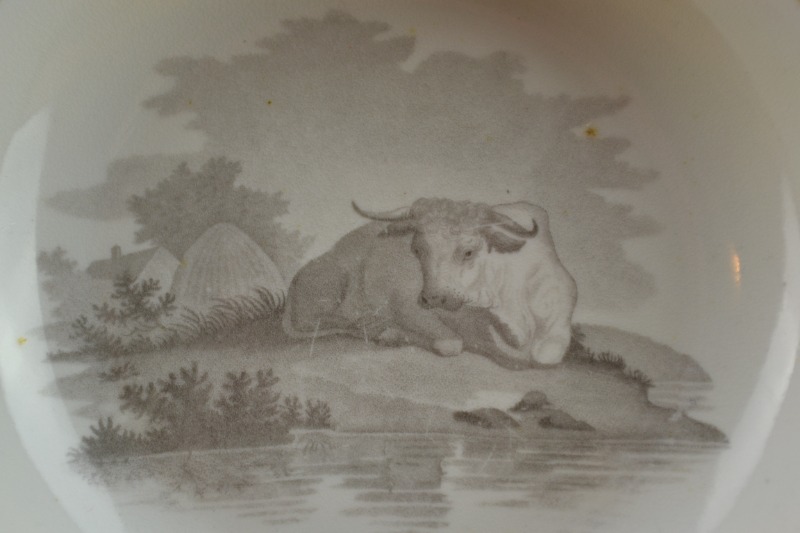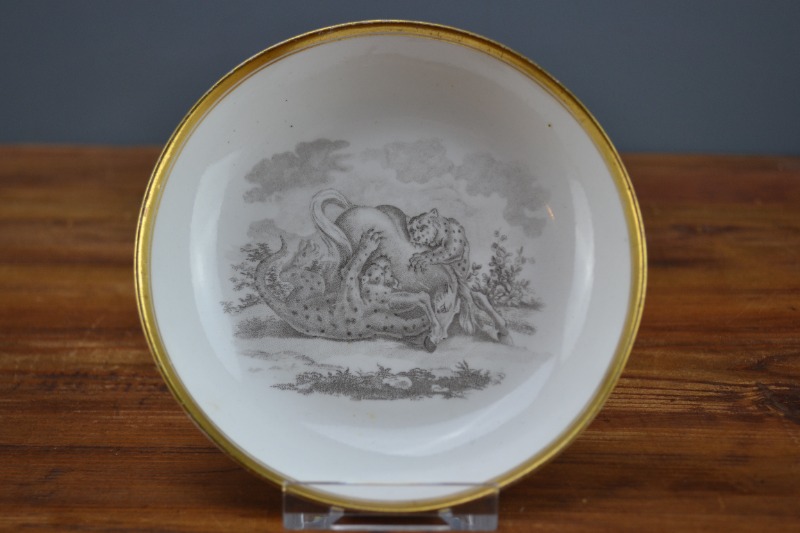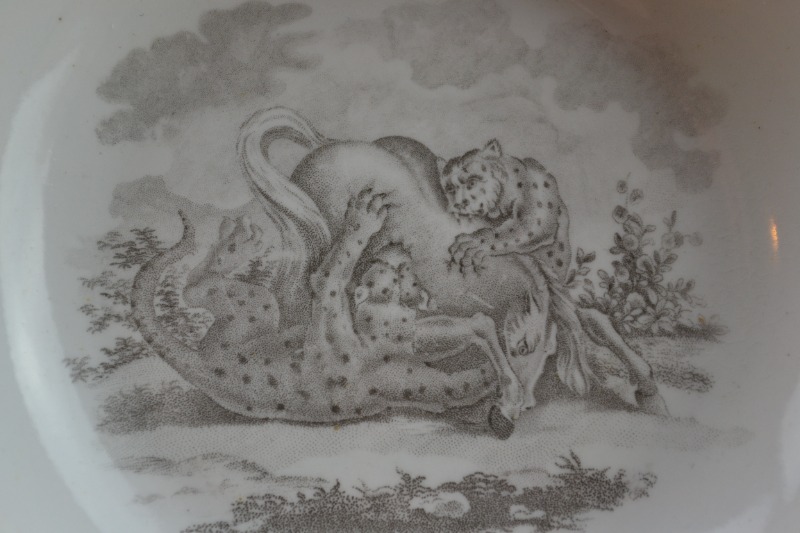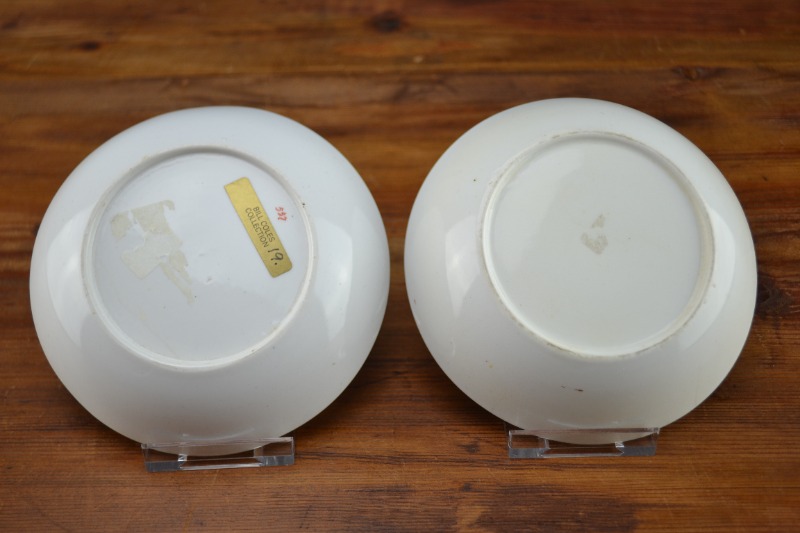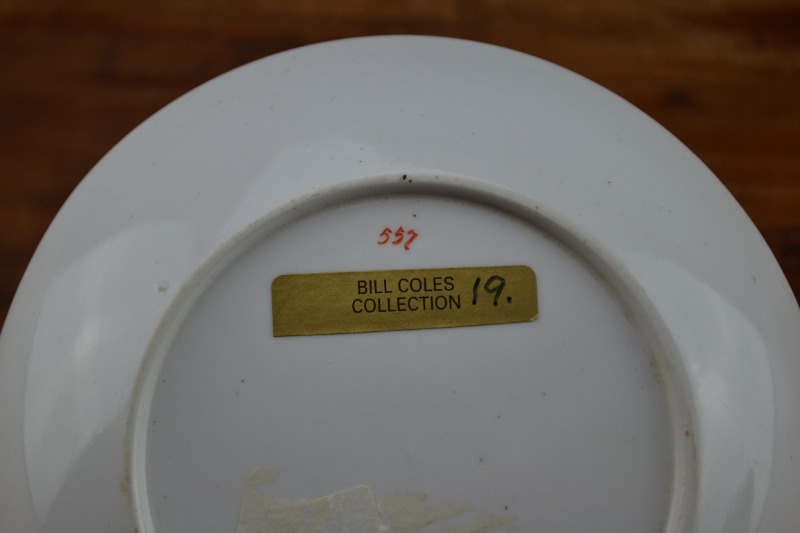Pair of Spode Bat Print Saucers, One With a Cow And One With Leopards, Pattern 557, c. 1803
Age:
Circa 1803
Material:
Porcelain
Dimensions:
Diameter: 14cm
Shipping:
Standard Parcel
Price:
SOLD
Charcoal grey bat printed porcelain was introduced by Josiah Spode II c.1802-3. These saucers show contrasting scenes, one with a cow resting by a stream with a cottage and haystack behind, the other depicting two leopards violently attacking a horse.
The rare saucer with the leopards is in excellent condition with no chips or cracks. The gilt rim has little rubbing. It has the pattern number 557 painted in red and a sticker from the Bill Coles collection. The cow saucer is visually very good but has 1cm hairline crack. This one is unmarked. Spode porcelain before 1810 often only have a pattern number, or no mark at all.
Pattern 557 depicted romantic landscapes, scenes from rural life, notable houses and castles, as well as classical scenes. Glue bat printing can be recognised by its stipple effect and tonal range. However, it was a very precise and time-consuming operation that somewhat defeated the objective of mass production transfer-printing. It lasted only a short period and was largely abandoned by 1820. To transfer the print, boiled linseed oil was rubbed into the lines of an engraved and etched copper plate. The surface of the plate was carefully wiped clean, so that the oil remained only in the lines. A sheet of gelatine, known as a bat, was then pressed onto the copper plate. This transferred the oil from the plate to the bat, which was then applied to the glazed porcelain. Powdered colour was then lightly dusted over the porcelain, which stuck only to the parts that were oiled. Finally, the design was fired at 750?C to fix the pattern.

